Peter Behrens's Blog, page 488
January 16, 2014
Ghosts & Novels & Rotterdam
One bright winter day a year ago I was exploring Rotterdam with an amigo, the brilliant Dutch translator Guido Goluke. We drove there from Wassenaar in his tough little truck/van...
 Back then, I was halfway through this novel, which has drawn a lot on my father HHB's complicated upbringing in Europe...
Back then, I was halfway through this novel, which has drawn a lot on my father HHB's complicated upbringing in Europe...
 The story in the novel was partly inspired by HHB's deportee/refugee history. Some of HHB's most intense refugee days were passed in Rotterdam. In January 1919 he, his Anglo-Irish mother, and his German father arrived at Rotterdam on a steamer from Hull. They were being deported from the United Kingdom, where my grandfather had been an 'enemy alien' prisoner held in the Alexandra Palace in London, which operated as an internment camp during WWI. The three of them had expected to continue by train into Germany, but with violence, revolution and strikes of the 'German Revolution' most trains were;t running. They finally got themselves passage on a freight barge heading up the Rhine. That was my 9-year old father's introduction to Germany.
The story in the novel was partly inspired by HHB's deportee/refugee history. Some of HHB's most intense refugee days were passed in Rotterdam. In January 1919 he, his Anglo-Irish mother, and his German father arrived at Rotterdam on a steamer from Hull. They were being deported from the United Kingdom, where my grandfather had been an 'enemy alien' prisoner held in the Alexandra Palace in London, which operated as an internment camp during WWI. The three of them had expected to continue by train into Germany, but with violence, revolution and strikes of the 'German Revolution' most trains were;t running. They finally got themselves passage on a freight barge heading up the Rhine. That was my 9-year old father's introduction to Germany.
Twenty years later, HHB found himself unexpectedly back in Rotterdam. September 1939. War had started. With thousands of other people he was trying to get out of Europe. My family aren't Jews--they're Catholics--so there were thousands of people in more dire straits in 9/39 than HHB was. But still, he'd fled Germany with his Canadian passport...
 ...just as war was declared, not wishing to get trapped in the wartime Reich and made to join the heer, or worse. He spent two weeks in Rotterdam living in a cheap hotel and budgeting his money day by day before he was able to book passage on a Holland-America ship, SS Volendam, to New York.
...just as war was declared, not wishing to get trapped in the wartime Reich and made to join the heer, or worse. He spent two weeks in Rotterdam living in a cheap hotel and budgeting his money day by day before he was able to book passage on a Holland-America ship, SS Volendam, to New York.
 Guido and I spent a most un-Dutch day in Rotterdam. Clear cold blue sky, fresh white snow. Windy open spaces, towering skyscrapers--it reminded me of....Calgary.
Guido and I spent a most un-Dutch day in Rotterdam. Clear cold blue sky, fresh white snow. Windy open spaces, towering skyscrapers--it reminded me of....Calgary.
 I liked Rotterdam. And I had HHB's old passport with me---seventy four years since it had last been in Rotterdam. Guido and I had a great lunch at a cafe, with several glasses of Brand beer and the passport, and the passenger list from the Volendam...
I liked Rotterdam. And I had HHB's old passport with me---seventy four years since it had last been in Rotterdam. Guido and I had a great lunch at a cafe, with several glasses of Brand beer and the passport, and the passenger list from the Volendam...
 .. then we walked around the quays. There is a superb maritime museum--and the old Holland-Amerika headquarters, where HHB would have bought his ticket in 9/39...
.. then we walked around the quays. There is a superb maritime museum--and the old Holland-Amerika headquarters, where HHB would have bought his ticket in 9/39...
 ...is now the New Yorker Hotel, and we had a great cup of coffee there, and I sensed the ghost, and the ghosts. And now I'm sitting in a coffeshop in Portland ME reading through the novel ms., which weighs in at 525pp., and wondering what HHB would think, and wishing he were around to give it a read.
...is now the New Yorker Hotel, and we had a great cup of coffee there, and I sensed the ghost, and the ghosts. And now I'm sitting in a coffeshop in Portland ME reading through the novel ms., which weighs in at 525pp., and wondering what HHB would think, and wishing he were around to give it a read.

 Back then, I was halfway through this novel, which has drawn a lot on my father HHB's complicated upbringing in Europe...
Back then, I was halfway through this novel, which has drawn a lot on my father HHB's complicated upbringing in Europe... The story in the novel was partly inspired by HHB's deportee/refugee history. Some of HHB's most intense refugee days were passed in Rotterdam. In January 1919 he, his Anglo-Irish mother, and his German father arrived at Rotterdam on a steamer from Hull. They were being deported from the United Kingdom, where my grandfather had been an 'enemy alien' prisoner held in the Alexandra Palace in London, which operated as an internment camp during WWI. The three of them had expected to continue by train into Germany, but with violence, revolution and strikes of the 'German Revolution' most trains were;t running. They finally got themselves passage on a freight barge heading up the Rhine. That was my 9-year old father's introduction to Germany.
The story in the novel was partly inspired by HHB's deportee/refugee history. Some of HHB's most intense refugee days were passed in Rotterdam. In January 1919 he, his Anglo-Irish mother, and his German father arrived at Rotterdam on a steamer from Hull. They were being deported from the United Kingdom, where my grandfather had been an 'enemy alien' prisoner held in the Alexandra Palace in London, which operated as an internment camp during WWI. The three of them had expected to continue by train into Germany, but with violence, revolution and strikes of the 'German Revolution' most trains were;t running. They finally got themselves passage on a freight barge heading up the Rhine. That was my 9-year old father's introduction to Germany.Twenty years later, HHB found himself unexpectedly back in Rotterdam. September 1939. War had started. With thousands of other people he was trying to get out of Europe. My family aren't Jews--they're Catholics--so there were thousands of people in more dire straits in 9/39 than HHB was. But still, he'd fled Germany with his Canadian passport...
 ...just as war was declared, not wishing to get trapped in the wartime Reich and made to join the heer, or worse. He spent two weeks in Rotterdam living in a cheap hotel and budgeting his money day by day before he was able to book passage on a Holland-America ship, SS Volendam, to New York.
...just as war was declared, not wishing to get trapped in the wartime Reich and made to join the heer, or worse. He spent two weeks in Rotterdam living in a cheap hotel and budgeting his money day by day before he was able to book passage on a Holland-America ship, SS Volendam, to New York.
 Guido and I spent a most un-Dutch day in Rotterdam. Clear cold blue sky, fresh white snow. Windy open spaces, towering skyscrapers--it reminded me of....Calgary.
Guido and I spent a most un-Dutch day in Rotterdam. Clear cold blue sky, fresh white snow. Windy open spaces, towering skyscrapers--it reminded me of....Calgary.
 I liked Rotterdam. And I had HHB's old passport with me---seventy four years since it had last been in Rotterdam. Guido and I had a great lunch at a cafe, with several glasses of Brand beer and the passport, and the passenger list from the Volendam...
I liked Rotterdam. And I had HHB's old passport with me---seventy four years since it had last been in Rotterdam. Guido and I had a great lunch at a cafe, with several glasses of Brand beer and the passport, and the passenger list from the Volendam...
 .. then we walked around the quays. There is a superb maritime museum--and the old Holland-Amerika headquarters, where HHB would have bought his ticket in 9/39...
.. then we walked around the quays. There is a superb maritime museum--and the old Holland-Amerika headquarters, where HHB would have bought his ticket in 9/39... ...is now the New Yorker Hotel, and we had a great cup of coffee there, and I sensed the ghost, and the ghosts. And now I'm sitting in a coffeshop in Portland ME reading through the novel ms., which weighs in at 525pp., and wondering what HHB would think, and wishing he were around to give it a read.
...is now the New Yorker Hotel, and we had a great cup of coffee there, and I sensed the ghost, and the ghosts. And now I'm sitting in a coffeshop in Portland ME reading through the novel ms., which weighs in at 525pp., and wondering what HHB would think, and wishing he were around to give it a read.
Published on January 16, 2014 13:00
1976 Ford F-250 Ranger XLT Banff
 From Alex Emond, in Banff:
From Alex Emond, in Banff:"This would do quite nicely. IF you don't mind spending a few bucks on gas. I suppose you could live in it and spend the rent money on fuel. All that aside, it is a nice survivor , in very good shape and once you took the "Oiler" sticker off the tailgate you could drive it anywhere with pride. The dogs would really like that big back seat. Cheers"-AE




Published on January 16, 2014 03:34
January 15, 2014
1967 Lincoln Continental

I drove this car around Alpine Texas on the day of the great Texas Gypsy Truck adventure. A long time since I had driven one of the heavyweight battlecruisers of the late 60's-early 70's, when the genre was topping out. The Lincoln cruises. It floats. It powers. It's very quiet. Cornering is about what you'd expect, but long straight boulevards and West Texas highway miles are what this automobile was designed to feed on. The steering wheel feels slender and elegant in the hand. Lincolns of the era, 1961-69, show an almost Italian design gene in their sleek bodies, which are cleaner than most luxury mobiles of the era. Elwood Engel was the designer responsible. 1967 is more festooned that 1961--the style didn't improve over the decade--but it is still a very handsome car. And if you really want a four-door convertible, your choices are...well there aren't any. Except the Lincoln.










Published on January 15, 2014 11:42
January 14, 2014
1-tons: '82 Chevrolet and '82 Dodge
Caught the Dodge in Marfa, Texas, the Chevy in Newcastle, Maine. Sometimes the sky is blue in Maine, too. Even in winter.
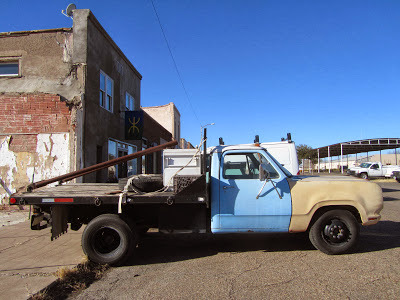
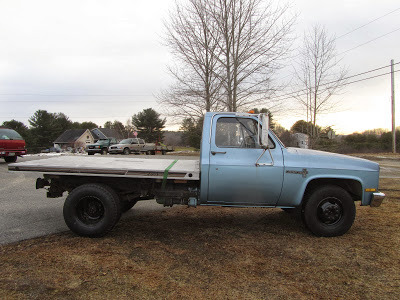
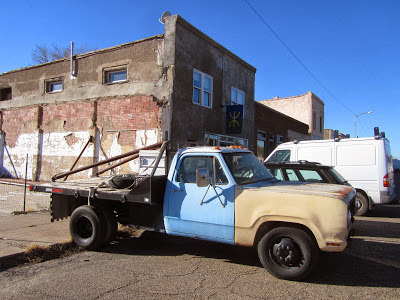
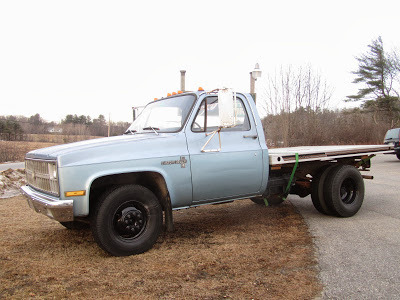
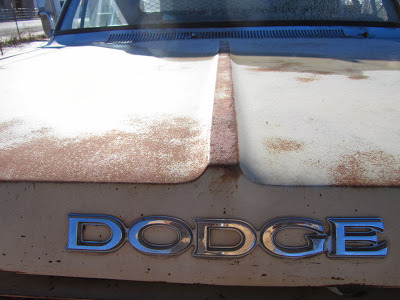
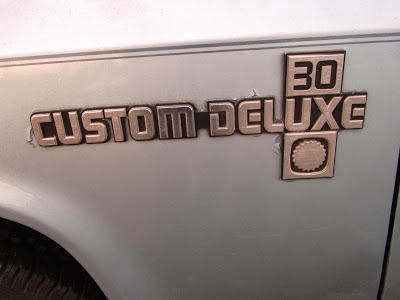
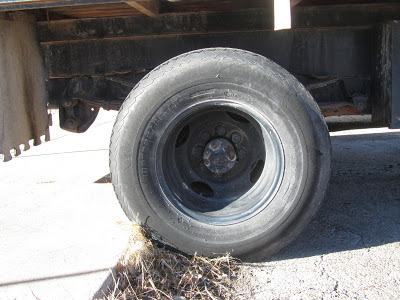
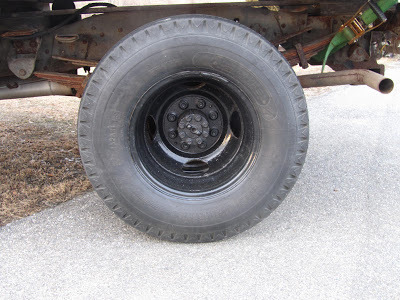
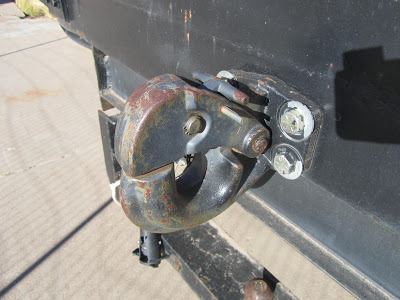
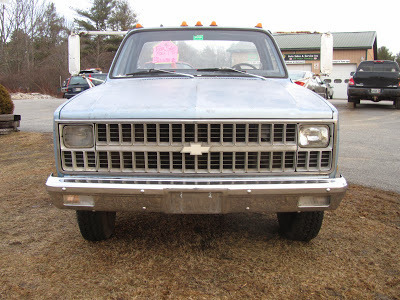

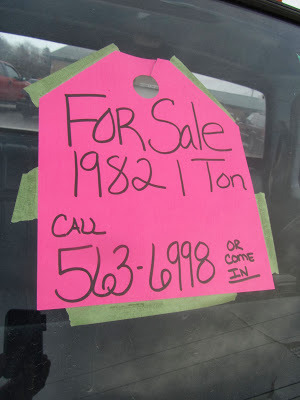
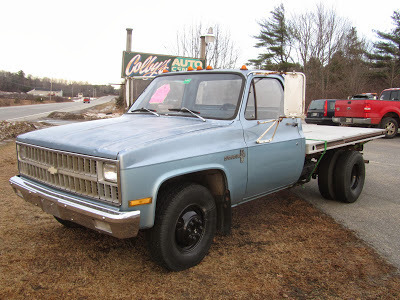













Published on January 14, 2014 16:56
January 13, 2014
Peter Kayafas, Totems
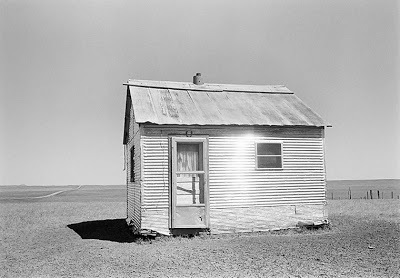
from Peter Kayafas' Totems show at the Sasha Wolf Gallery NYC, back in 2012. Made me think of Patrick Qvist's flying shack project in Marfa.
Published on January 13, 2014 17:17
1958 Chevrolet Yeoman Station Wagon
We were in West Texas earlier this month and maybe mentally we're still there--it was 70F degrees in Marfa today. But meanwhile, even up here in Maine, old metal happens.
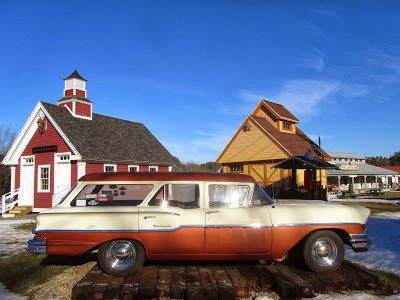
Caught this handsome wagon on US 1 in Wiscasset. Just the name "Yeoman" speaks to a culture let alone marketing strategy that no longer exists: i.e., appeal to the frugal, plain-and-simple aesthetic and pocketbook. Now, it may seem odd to call a giant finned behemoth like this wagon 'frugal', or 'plain and simple', but in the context of the day it really was as basic a family roadster as was possible in '58. Wagons are so much more appealing than the minivan or SUV, I think. I like the Chevys of 1958. Pontiacs of '58 were okay too, but the Buicks and Oldsmobiles of that year were monstrous. Saw a nice 1958 Chevrolet Biscayne in Ellsworth Maine around Thanksgiving.
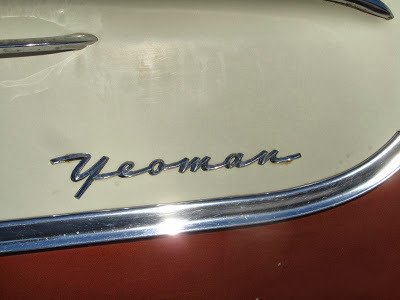


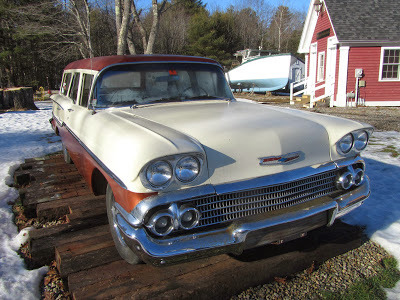

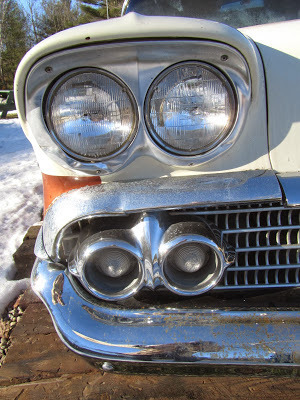
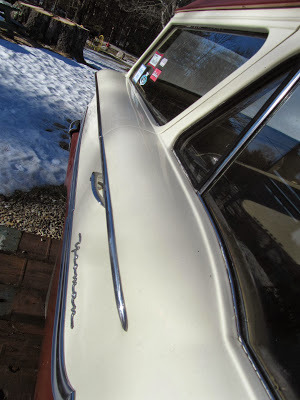

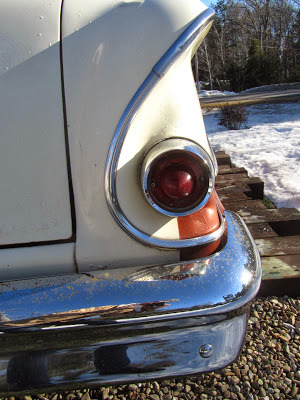

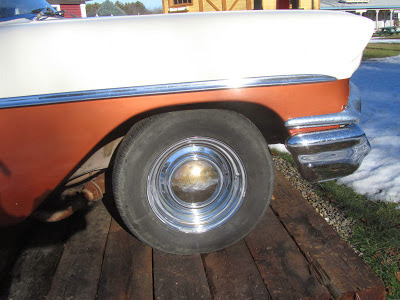

Caught this handsome wagon on US 1 in Wiscasset. Just the name "Yeoman" speaks to a culture let alone marketing strategy that no longer exists: i.e., appeal to the frugal, plain-and-simple aesthetic and pocketbook. Now, it may seem odd to call a giant finned behemoth like this wagon 'frugal', or 'plain and simple', but in the context of the day it really was as basic a family roadster as was possible in '58. Wagons are so much more appealing than the minivan or SUV, I think. I like the Chevys of 1958. Pontiacs of '58 were okay too, but the Buicks and Oldsmobiles of that year were monstrous. Saw a nice 1958 Chevrolet Biscayne in Ellsworth Maine around Thanksgiving.











Published on January 13, 2014 14:24
January 12, 2014
Munjoy Hill, Portland Maine
January thaw. It's around 45F. A lot of the snow that had been dumped during the last month was washed away by a couple of warm, wet, windy days this week. It's funny, now that we are such a wired nation, how phrases go from unfamiliar to overused to parody, literally in the space of an afternoon. I first heard the term 'polar vortex' on Tuesday around midmorning. By the next day I'd heard it a hundred times--on the radio, in conversation, read it in the NYT. By the end of the week a whole entertainment subindustry around the concept had come and gone.
I took a little walk around Portland's east end this morning. Feeling wan after a week's worth of a bad cold. That glazed, unfocused, weak-limbed feeling...do you know what I'm talking about? It's difficult to do anything well, except whine. While walking I felt I was sleepwalking, and only took the camera out of my pocket once. I was intrigued with the way the first story of this balloon-framed house slopes out: if that is a traditional New England style, I've never noticed it before. Maybe it's a post-modern change: but that would have meant new footings, a new foundation, right? Or maybe not. It's not that easy to see in the photograph, but the first story sheath walls slant outward slightly, from the top to the bottom--sort of like they are leaning against the rest of the house. It's not a particularly pleasing effect.
I tell myself I feel the light coming back. Well, on a day like today, that's easy. But there's lots of winter still to come.

I took a little walk around Portland's east end this morning. Feeling wan after a week's worth of a bad cold. That glazed, unfocused, weak-limbed feeling...do you know what I'm talking about? It's difficult to do anything well, except whine. While walking I felt I was sleepwalking, and only took the camera out of my pocket once. I was intrigued with the way the first story of this balloon-framed house slopes out: if that is a traditional New England style, I've never noticed it before. Maybe it's a post-modern change: but that would have meant new footings, a new foundation, right? Or maybe not. It's not that easy to see in the photograph, but the first story sheath walls slant outward slightly, from the top to the bottom--sort of like they are leaning against the rest of the house. It's not a particularly pleasing effect.
I tell myself I feel the light coming back. Well, on a day like today, that's easy. But there's lots of winter still to come.

Published on January 12, 2014 13:56
1964 Porsche C, Marfa Texas
AE caught a couple of Porsche SC coupes in a back alley in Banff last year. This C lives in Marfa and always looks just right, out there on Highland Avenue. I was never sure what was a Speedster and what wasn't, but Pat Rogers cleared up that issue.










Published on January 12, 2014 08:58
January 11, 2014
Plain Jane. The Chevrolet C10. Donald Judd. Marfa.

The C-10 is about as basic a truck as exists. Though it is badged as a "Custom Deluxe", it ain't either. Come to think of it, any model called a "Custom" by Detroit was usually close to a stripper. Weren't Ford Custom sedans shrunk-down Fairlanes and Galaxies? Anyway, the C10. Something about its plainness and boxiness of line appeals. I want to keep taking pictures of it. It's a very Judd-looking truck. Seems to suit Marfa landscape. No cruciform doors...but you know what I mean. A rigorously organized shape.
This truck spent most of its life employed as a work truck by the City of Marfa, painted schoolbus yellow. I bought it from Lencho three years ago. Hector Sanchez painted it for me. BB picked out the color: she liked the ivory of Roy the Ford guy's mid-70s F-150, so we went for Ford ivory. Came out well. Maybe bigger tires next time around.














Published on January 11, 2014 12:38
Les O'Brien, Banff, and The Bow Valley Parkway

“The O'Briens is a major accomplishment” — New York Times Book Review
I need confirmation from Alex Emond on this, but I think the artwork on the cover of this French edition of The O'Briens shows a 1950 Plymouth (?) rolling down the old 1-A Highway in Banff National Park. That's not Cascade Mountain, isn't it? Is it Bourgeau? Or Pilot Mtn? Confirmation please. I remember working on a G. Boehnisch landscaping contract on this section of the 1A (aka The Bow Valley Parkway) in the autumn of 1981, with Blake O'Brian and Toby Clark. Bill Burleson's Banff series is up here.
Here's The O'Briens interview on Michael Silverblatt's Bookworm show; and the NPR Weekend Edition interview with Jackie Lyden.
 Cascade Mtn and Bow River, Banff 10/2011
Cascade Mtn and Bow River, Banff 10/2011
Published on January 11, 2014 09:01



